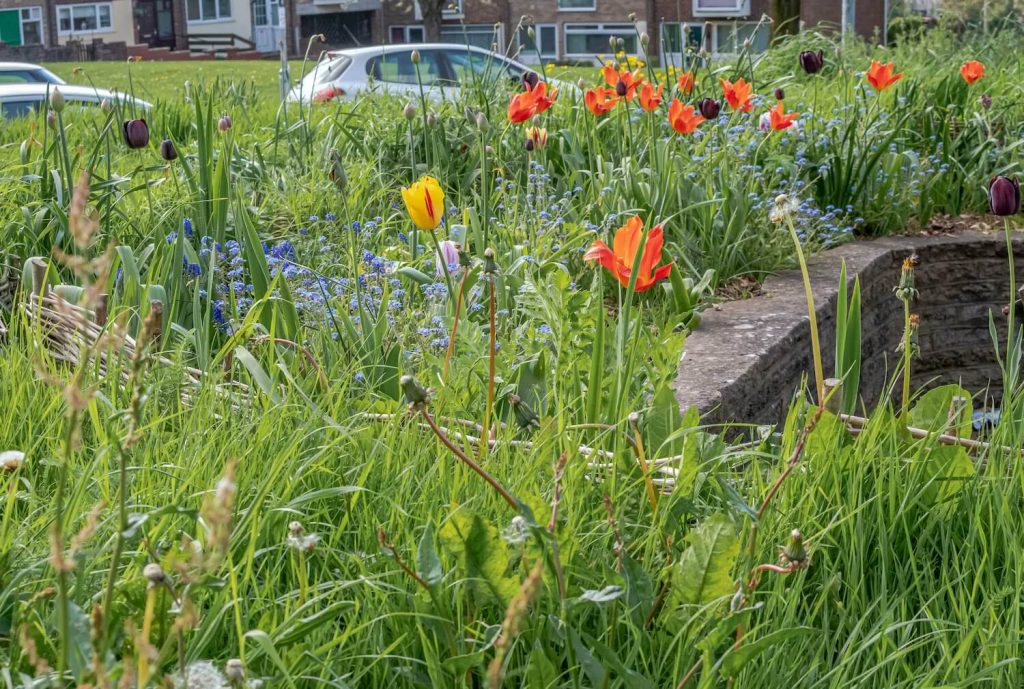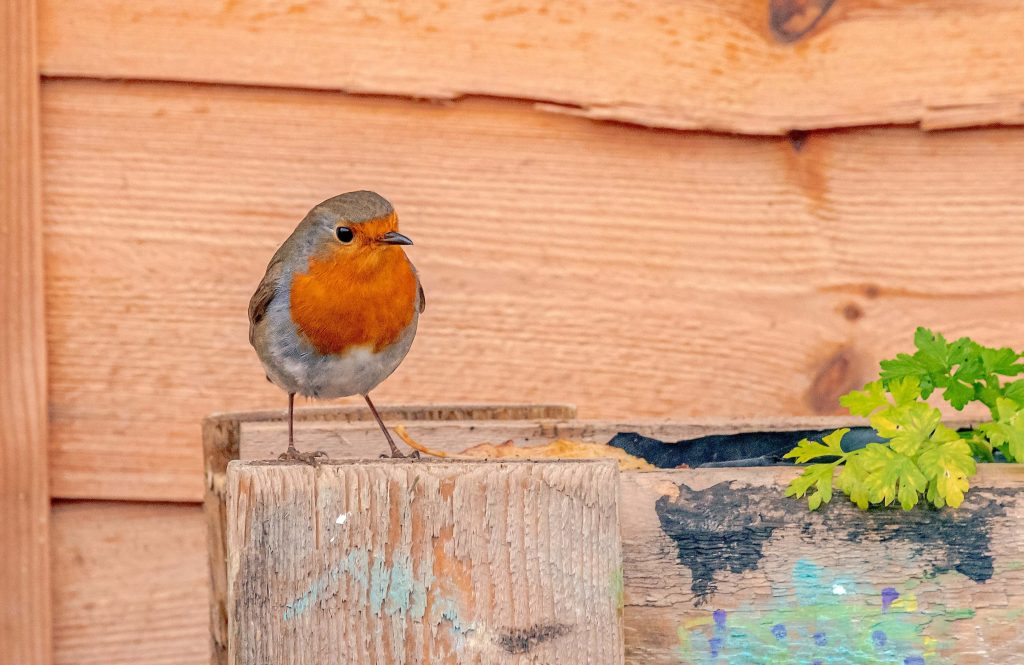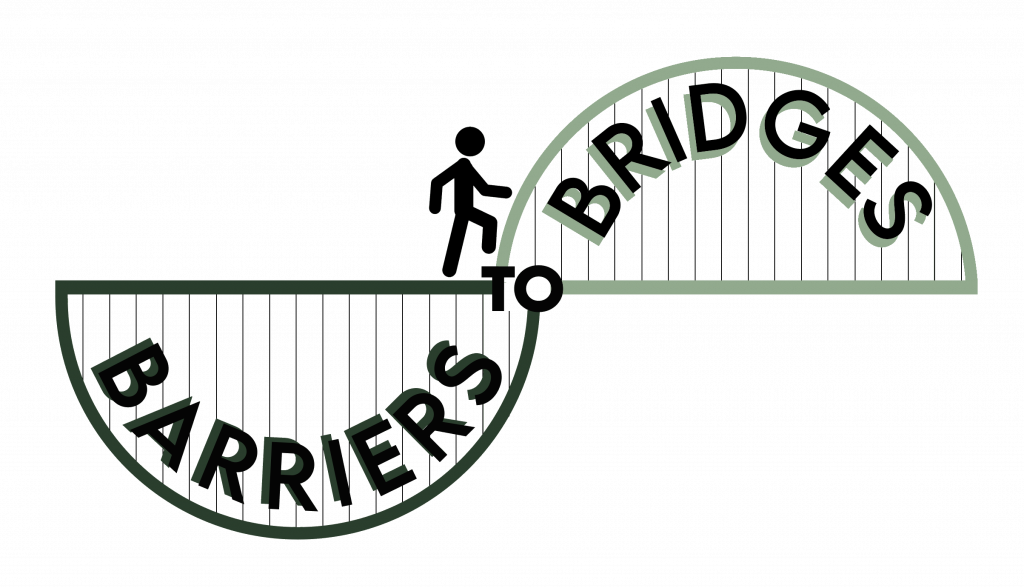by Tay Aziz
Writer’s note: pseudonyms have been used in respect of anonymity.
It’s an early summer’s afternoon in the community garden; bees are exploring the first electric blue cornflowers of the year, while a steady hum of activity weaves around a space filled with planters at one end and picnic benches at the other. Watering hoses spray iridescent rainbows, people weave hazel sticks and twine around bean plants while sharing events of the past week, as the manager of the garden pours steaming cups of tea and coffee – served with custard creams.

Photo by Guy Manchester
This garden is one of many run by Alive, serving its local community with social and therapeutic horticulture, a chance to spend time outdoors, make new friends and learn new skills. The inclusive sessions attract a wide range of locals including Somali women, elderly retirees, and volunteers who come to support those who need a little extra care or a comforting conversation that day. Funded by the NHS, the garden is an alternate prescription; rather than medication, Green Social Prescribing is the practice of supporting people in engaging in nature-based interventions and activities to improve their mental health. The innate, multi-sensory nature of gardening creates space for genuine human connection, and the garden manager offers a variety of activities to suit everyone’s needs. As someone with a chronic pain condition, I can take part as much or as little as I am able – hauling bags of compost on good days, or sitting at a bench and separating seedlings on days when standing is difficult. Research has shown that having nature nearby, particularly in urban environments, can help people suffering from chronic pain to reduce their worry, fear and difficulty directing their attention away from their pain. Even though I am employed to support the group as a Community Organiser for the Wildlife Trusts, Mother Nature is freely giving with her gifts and my own well-being eases while I support others; the gritty soil between my fingers, the song of blackbirds in the tree above me and the warmth of the sun lull my concentration into the tangle of roots I gently tease apart, the sound of conversation, a pleasant bubble in the background – as the pain in my back slowly retreats to a corner of my mind.
The garden is an oasis of quiet in a noisy and busy neighbourhood characterised by a high density of residential tower blocks, located in one of the most ‘green space deprived’ neighbourhoods in England. Many locals live in flats without access to a garden or green space close to their home with high levels of poverty, meaning many don’t have the means to travel to greener and cleaner spaces in the city. However, even though many of the attendees at the community garden come to find solace from their own personal challenges, the group have created and saved green space for local people. They have worked to turn drab, grey streets into wildlife-rich areas with herbs and bee-friendly flowers, bringing nature to the door of the community.

Photo by Guy Manchester
“When passers-by smile at daffodils we have planted or mention the colour in the neighbourhood, it makes me happy that I can share the joy that nature gives me with others who need it too.” says Sennen. Being of service to others who live locally has given him a great deal of pride and helped rejuvenate his self-confidence. “Sometimes, I felt like I had nothing to offer, or that I was a burden. But I know now that I’m helping my community in my own way, in a powerful way – by making people smile, so that for a moment they forget their troubles.”
Leo, a local elderly resident, has faced loneliness and anxiety over the years, but being a regular member of the gardening group has allowed her to flourish. As a prolific, artist, writer and creative, her love of the garden is meticulously recorded in a beautifully crafted scrapbook, full of photos and handwritten notes. At the centre of these pages are the friendships and shared moments, birthdays, Christmases, visits from friendly robins and resident cats, and friends made and missed who have joined the group in the past. She says: “Nurturing other living things, like the plants in the garden, has really helped my wellbeing. By giving things in the garden gentle care, it’s helped me to learn how to give gentle care to myself.”

Photo by Guy Manchester
As the UK faces one of the worst falls in living standards on record, community gardens are a small way communities can take back power and agency, give people a sense of purpose and support their well-being. Gardens bring together people who may otherwise never meet, through a shared enjoyment and connection of being outdoors. They provide the pleasure of seeing plants grow as we nurture them with our own hands, and they provide opportunities for people like me who may be living with disability, mental ill health or other issues that traditionally may cause us to be excluded, to gain companionship, new skills and a sense of self-worth. Growing food together and planting new wildlife habitats strengthens community resilience and helps to provide food and places of beauty and sanctuary to residents human and non-human. But most of all, community gardens are a lifeline. They are an oasis of green in an overstimulating, busy city environment that bring people together to grow plants and grow community.
© 2023
